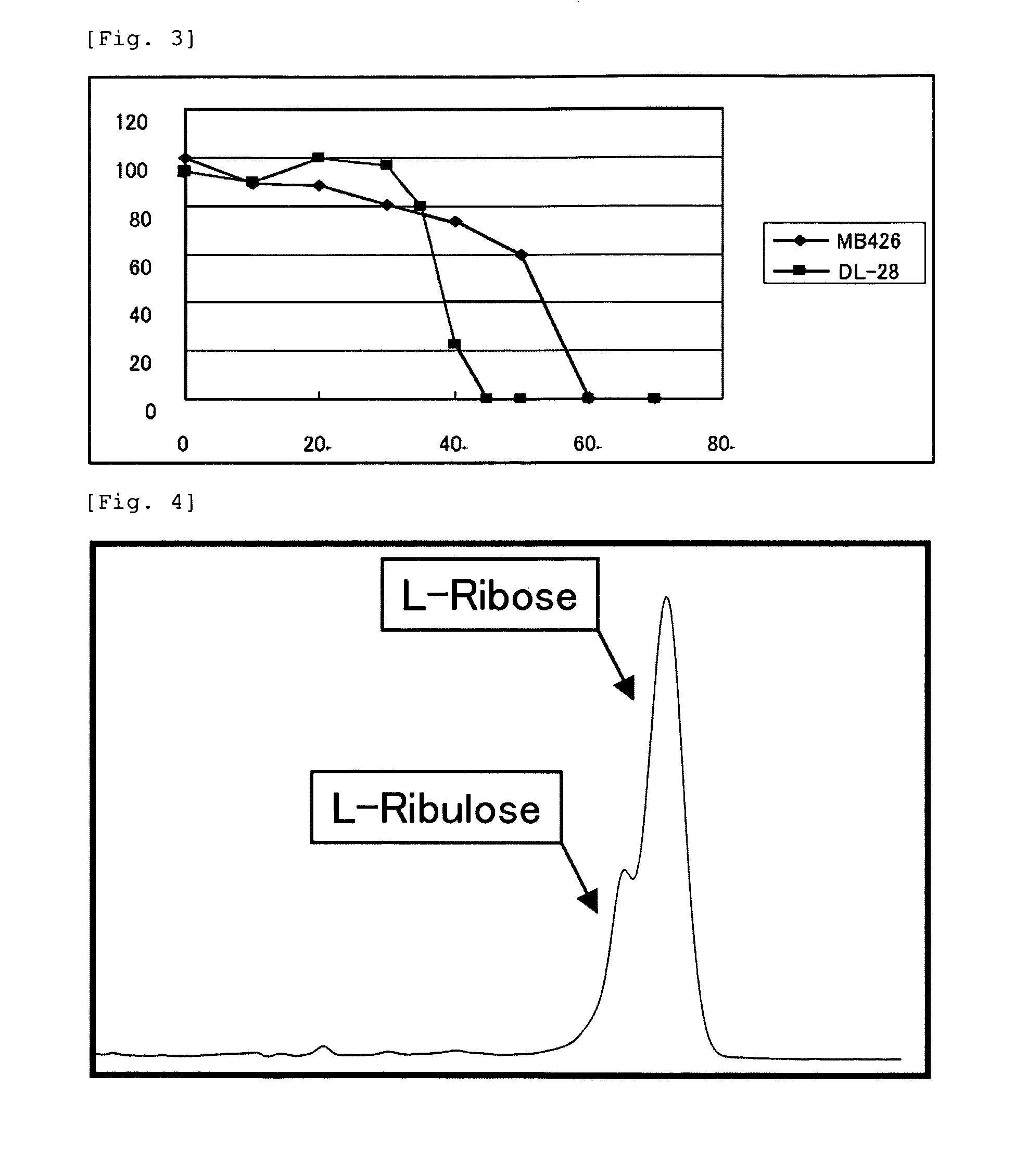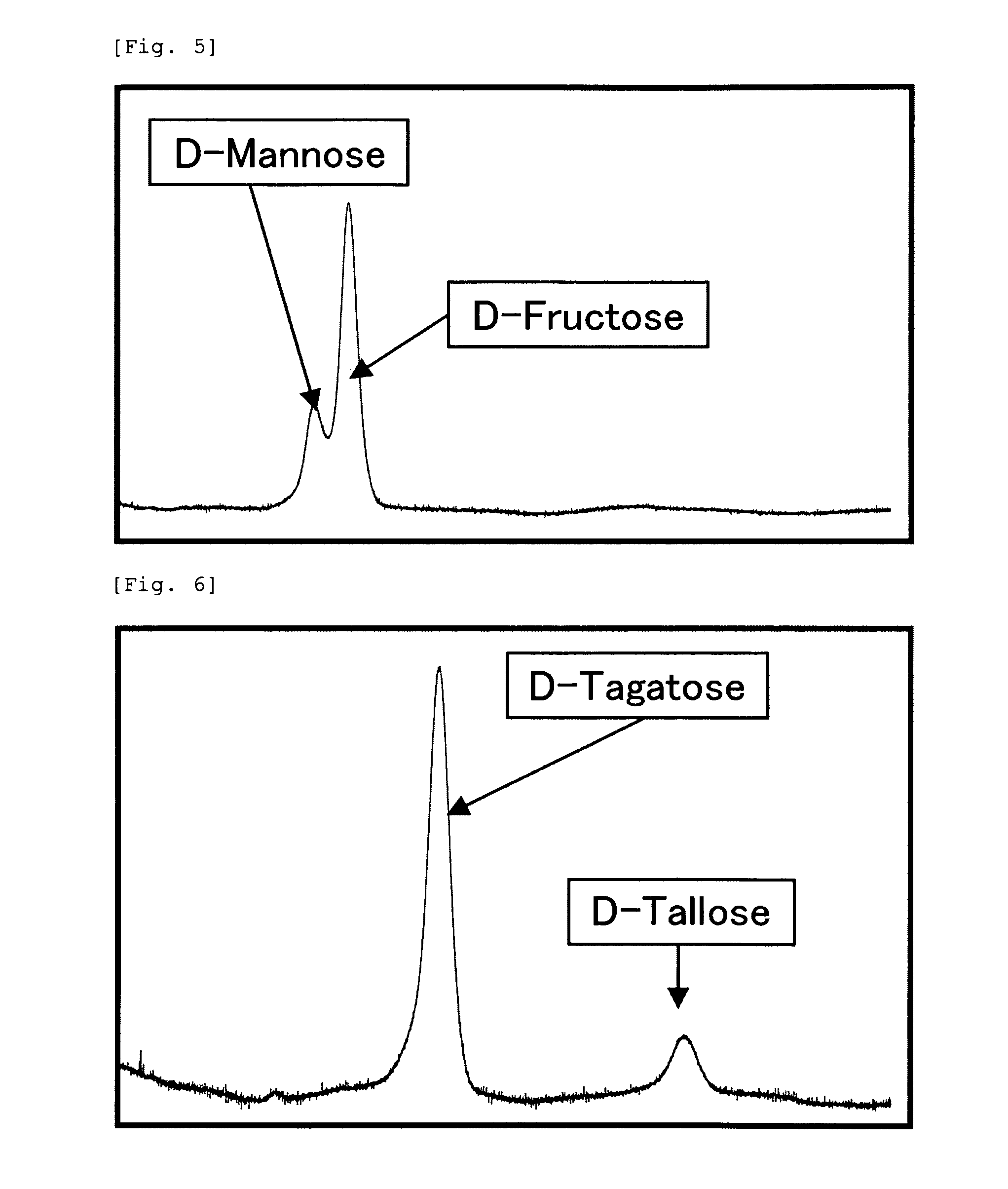Thermostable L-ribose isomerase and method for producing same and use of same
a technology of ribose isomerase and isomerase, which is applied in the direction of sugar derivates, peptide sources, bacteria based processes, etc., can solve the problems of very low yield of intended sugar and very tough conditions for the production of the approaches, and achieves poor thermostable, high stability, and high thermostability.
- Summary
- Abstract
- Description
- Claims
- Application Information
AI Technical Summary
Benefits of technology
Problems solved by technology
Method used
Image
Examples
example 1
Properties of Purified Enzyme
[0053]Using 50 mM L-ribose as a substrate, the enzyme reaction continued at 45° C. for 10 minutes, so that the amount of the generated ketose (L-ribulose) was assayed by the cysteine / carbazole method. As to the temperature stability, the enzyme activity was assayed after 10-min treatment at individual temperatures. As to the optimal pH conditions, the enzyme reaction was performed at 45° C. for 10 minutes in 50 mM acetate buffer (pH 2 to 6), 50 mM sodium phosphate buffer (pH 6 to 8), 50 mM Tris-HCl buffer (pH 8 to 9) or 50 mM glycine-sodium hydroxide buffer (pH 9 to 11), using 50 mM L-ribose as substrate, to assay the amount of a ketose (L-ribulose) generated thereafter by the cysteine / carbazole method (Table 2). The enzyme reaction was done at the composition shown in Table 2 at 45° C. for 10 minutes (Table 3), and the reaction was terminated by adding 50 μl of 10% TCA (trichloroacetic acid). As shown in Table 2, the cysteine / carbazole method comprised ...
PUM
| Property | Measurement | Unit |
|---|---|---|
| pH | aaaaa | aaaaa |
| pH | aaaaa | aaaaa |
| pH | aaaaa | aaaaa |
Abstract
Description
Claims
Application Information
 Login to View More
Login to View More - R&D
- Intellectual Property
- Life Sciences
- Materials
- Tech Scout
- Unparalleled Data Quality
- Higher Quality Content
- 60% Fewer Hallucinations
Browse by: Latest US Patents, China's latest patents, Technical Efficacy Thesaurus, Application Domain, Technology Topic, Popular Technical Reports.
© 2025 PatSnap. All rights reserved.Legal|Privacy policy|Modern Slavery Act Transparency Statement|Sitemap|About US| Contact US: help@patsnap.com



